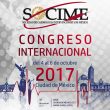Transcatheter aortic valve replacement (TAVR) is often associated with conduction abnormalities, which usually end with permanent pacemaker (PPM) implantation in 10-40% of patients. Factors predisposing to PPM after TAVR have been studied in great detail, but their short- and long-term clinical impact is still controversial. Recently, outcomes from a large cohort of patients were...
Early Coronary Angiography in High-Risk Non-ST-Elevation ACS
Coronary angiography is essential for patients admitted with non-ST-elevation acute coronary syndrome, since it allows physicians to confirm the diagnosis, stratify the risk, and define the revascularization and antithrombotic management strategies. There is no doubt that these patients should be studied invasively, but the timing for that is still uncertain. Coronary catheterization within...
With Absorb Out, New Resorbable Scaffolds Have Come onto the Market
By restoring vascular physiology and eliminating the inflammatory focus and the chance of fracture and neo atherosclerosis inherent to DES, bioresorbable scaffolds offer the potential to improve long term outcomes. A number of bioresorbable materials have been tested, mainly polylactic acid, with several limitations that have taken the Absorb bioresorbable scaffold out of the market....
Frequency and Evolution of Cardiac Perforation in Patients with a History of MRS
Courtesy of Dr. Carlos Fava. Coronary perforation (CP) is a very uncommon event (≈0.4%), associated with severe complications that entail risk of death. It has usually been related to patients with a history of myocardial revascularization surgery (MRS). However, this group usually presents lower rates of cardiac tamponade due to pericardial fibrosis caused by surgery. This...
SOCIME Annual Meeting: Featuring an Attractive Scientific Agenda
As from today (October 4) until Friday, October 6, Mexico City Will hosts one of the most important meetings of interventional cardiology in Latin America: SOCIME 2017. With an ambitious scientific agenda including interesting sessions, live cases and prestigious Latin American and international guests, the Mexican Society of Interventional Cardiology continues to successfully advance the...
New Strategies for the Femoropopliteal Artery
Courtesy of Dr. Carlos Fava. The incidence of peripheral vascular disease is clearly increasing, progressing towards critical ischemic claudication and amputation. Angioplasty is currently the treatment of choice for these pathologies. Several times, an implanted stent ends up cracking due to extensive calcification, increasing the rate of restenosis and worsening critical ischemia. Technological development on drug-eluting...
Diabetics’ Silent Ischemia Myth Busted
Diabetes mellitus patients generally present more diffuse coronary disease, faster lesion progression and higher risk of restenosis after PCI. The way these anatomical differences translate into in a different clinical practice, compared to non-diabetic patients, remains unclear. Prior studies comparing the frequency of angina symptoms in diabetic vs. non-diabetic patients have arrived to contradicting outcomes,...
It Is a Fact: Cerebral Protection in TAVR Has Proved to Reduce Stroke and Death
Cerebral ischemic events after transcatheter aortic valve replacement (TAVR) have been identified as independent predictors of morbidity and mortality. New-generation devices have managed to partially reduce the rate of cerebral events, but it still is around 5.5% at 30 days for patients undergoing TAVR through transfemoral access. First data on cerebral protection devices had only shown...
Dr. Juan Granada, New President and CEO of the Cardiovascular Research Foundation
The prestigious Colombian Interventional Cardiologist was appointed President and Chief Executive Officer (CEO) of the Cardiovascular Research Foundation (CRF) 15 days ago. He is now also a member of the CRF board of Directors. SOLACI wishes Dr. Granada congratulations for this well deserved recognition and wishes him the best for the important challenge ahead. We are...
The need for dialysis after TAVR increases mortality
Courtesy of Dr. Carlos Fava. Stage III or higher renal impairment is frequent before TAVR, and the need for new dialysis after the procedure may reach up to 20%. Within that percentage, 5% may require permanent dialysis, which increases mortality up to 9 times at one year. In that sense, factors leading to that complication have not...









